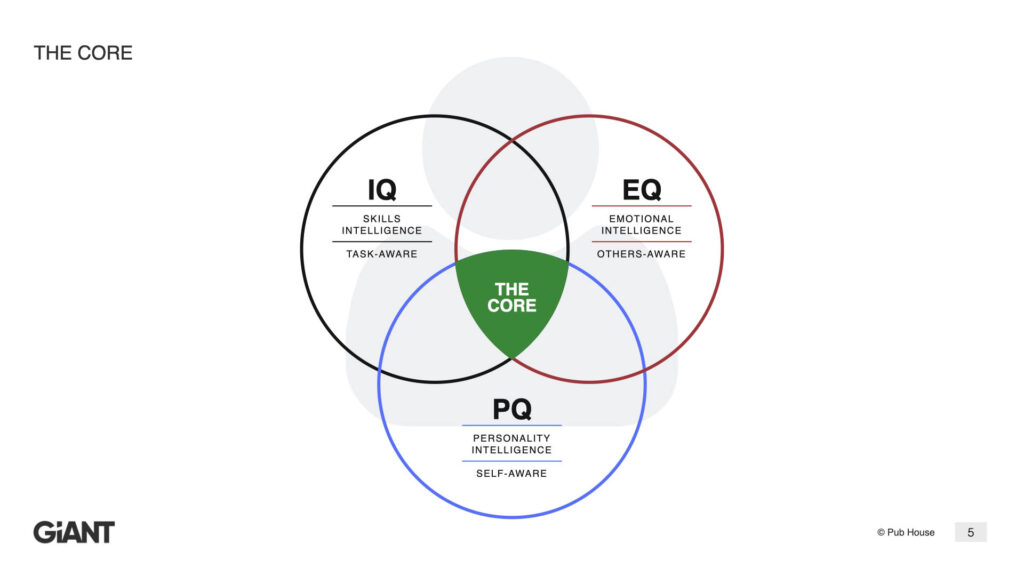Have you ever had a difficult time hiring the right person for your team? Perhaps you are dealing with a vacancy right now. Or maybe you hired someone for a role only to discover the fit was not what you expected.
In a perfect world, every hire would be effective and our teams and ministries would flourish. The truth is, however, it is difficult to expect that. Why is that, and does it have to be that way? No one with a vacant position would try to sabotage the hiring of a new employee. When there is an organizational need, the intent is always to find the most qualified candidate for the role.
Uncertainty may occur as you replace a departing team member or as you seek a person to expand your existing team. Though these realities are different, each requires a framework to fill the gap. There are several approaches we can take to ensure the next candidate we employ is the right candidate for hire and will be a good fit for our team. Consider two distinctives that can make a difference when filling a vacancy: 1) Be Clear; 2) Evaluate the Core.

Be Clear
It may sound too easy, but every formal position on your team should be clearly defined (see Role Clarity as an example) within the larger organizational structure. You might be surprised how this simple step gets easily overlooked. Too often it is a relief to get something on paper so we can post a job right away. Shortcutting this step can have a disastrous effect on the hiring process. We must define positions well and regularly evaluate them. Any time there is a vacancy, a position should be reevaluated against its role clarity and adjusted accordingly. At our church, even our formal volunteer positions have defined, documented roles.
Role clarity does not just determine what a new hire will do, it also demonstrates what a new hire will not do. We can really get tripped up because we tell candidates what we are looking for but do not take the time to tell them what we are not looking for. Semantics matters when talking with candidates who are not familiar with your generally understood language around culture, roles, and responsibilities. This is especially true when all they know about the position is a bullet point list of requirements, skills, and responsibilities that you probably do not use in your everyday language and conversations around the office.
The focus on clarity serves another purpose. It forces us to step out of our daily routine and ask important questions about the open position and church or ministry. For example, do we really need this position to perform this function or task? Is there something we need to begin doing and is this the right position to assign it? When we are clear about a new role and can communicate it effectively, it keeps us focused on the importance of hiring for fit without being distracted by glossy resumes or undefined and competing organizational priorities.

Evaluate the Core
It is commonly understood physical activity is important for our overall health and well-being. It is also true that our physical activity is enhanced when we actively engage our core (think generally low back, hips, and abs). This same concept applies when evaluating candidates for an open position on our team, albeit not physically.
When hiring for a new position, we almost always begin by evaluating a resume and conducting an interview to match our job description and role clarity. This is a critical and necessary step, but we cannot stop there if we want to hire the candidate with the best fit. We must evaluate a candidate’s CORE (see The CORE): task-awareness (IQ), self-awareness (PQ), and others-awareness (EQ). This holistic approach to evaluating a candidate enhances our understanding of the candidate’s possibility of success joining our team.
Task-awareness (IQ) helps ensure the candidate has the proper level of education, knowledge, and experience to perform the responsibilities of the position. Understanding and verifying these attributes is generally straightforward. Where there is a gap, we can determine whether we want to move on to other candidates or offer additional supports to close the gap.
The importance of self-awareness (PQ) cannot be overestimated. In self-awareness our tendencies can be identified (both good and bad) and reveal how those tendencies affect our influence, work product, and relationships. High self-awareness allows one the opportunity to demonstrate the actions he or she takes to lead himself or herself to mitigate negative tendencies and accentuate positive tendencies. To understand a candidate’s self-awareness, we must ask questions. Some high-level questions we can ask include but are not limited to the following:
- Tell us about a time when you failed, how you responded, and what you learned from it.
- What would your current colleagues describe as challenge areas in your work or influence?
- What frustrates you when working with others? How do you mitigate that frustration?
- What is your biggest area of growth as leader or contributor?
Although not the only questions that can be asked, they demonstrate how we can gain an understanding of a candidate’s self-awareness.
Finally, it is important to determine how “others-aware” (EQ) a candidate is. A technically competent and self-aware employee can accomplish much. However, influence and effectiveness will be restricted if the employee does not understand and know how to engage others, especially those who may be wired differently. Questions can help here as well. How good is a candidate at taking the time to understand others? Does he or she ask open ended questions? Can he or she effectively summarize the communication between teammates to ensure the interpretation is correct? Does the candidate know how to read non-verbal cues and resist the temptation to automatically assume he or she knows what the other person is talking about?
It is important to keep the Core in mind when evaluating a potential candidate for an open role as he or she moves through the interview process. It is equally important to corroborate our evaluation of a candidate’s Core when doing reference checks. Reference checks are a critical step to verify what we see in a candidate and verify if questions or concerns about their candidacy are founded. Evaluating the Core takes time, but it is well worth the investment.
In ministry-based organizations, we trust the Lord to resource the work He has called us to do. Resourcing the work is multi-faceted. It includes money, physical assets, and people. When there is an opportunity to fill a role, it is important and wise to prayerfully consider the type of person the Lord wants to use to fill that position. Part of that wisdom includes our best effort to create a process to effectively evaluate candidates. If we are accidental or inconsistent in our approach and evaluation of candidates, we run the risk of not hiring the right candidate or hiring the wrong one. Significant time might pass before we become aware of this possibility. We can be more confident in the process and outcome of hiring a new employee when we are clear on the role for which we are hiring and intentionally evaluate a candidate’s overall Core.
Stephen is a Master Coach with GiANT Worldwide and the Operations Pastor at Revive Church in Arvado.





